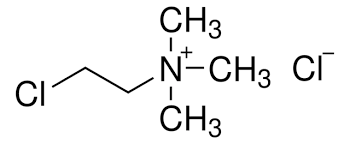 o read the news today is to be inundated with stories that range from
exaggerated to outright fabricated. Within that broad range of literary
excellence, we get stories that, while technically not pulled out of
the quantum vacuum, manage to be so because they are essentially free
of any identifiable facts.
o read the news today is to be inundated with stories that range from
exaggerated to outright fabricated. Within that broad range of literary
excellence, we get stories that, while technically not pulled out of
the quantum vacuum, manage to be so because they are essentially free
of any identifiable facts.
An example is a recent story about Cheerios. It turns out that Cheerios have been found to “contain” a chemical called chlormequat. The Journal of Exposure Science and Environmental Epidemiology, a journal I never heard of before, says:
Toxicological studies suggest that exposure to chlormequat can reduce fertility and harm the developing fetus at doses lower than those used by regulatory agencies to set allowable daily intake levels. Here we report the presence of chlormequat in urine samples collected from people in the U.S. [1]
The article claims it was found in 90% of samples in 2023, a big increase from the 69% found in 2017. The mainstream press portray it as a need for more government regs, while the alternative media portray it as a conspiracy by a malevolent elite that cares more about profit than people. Both pick up the football and run with it toward their goal line. (Or their opponents' goal line, whichever way it works.)

Chlorocholine, aka chlormequat
Chlormequat, aka chlorocholine, is a plant growth regulator that decreases stem height, preventing the plant from bending over, which is considered a bad thing, even for oats and wheat. As you can see from the structure, it's a choline molecule (which is found in most cells, including the brain) with a chlorine atom attached. “Quat” simply means a quaternary nitrogen (the 'N' in the structural diagram with four things attached), which choline also has, but ‘chlormequat’ sounds more dangerous because it sounds like ‘paraquat’, which is totally different.
The EPA, of course, wants to ban it, even though they say there are “no dietary, residential, or aggregate risks of concern.” Nor are there any “risks of concern to non-target, non-listed aquatic vertebrates . . . aquatic invertebrates, and aquatic and terrestrial plants.” Sneaky devils at General Mills, managing to wipe us out with something that even the US EPA, which thinks its own shadow is a deadly hazard, doesn't much care about.
The paper merits a ‘C−’ on the Fippler Scale of Research Quality, which I will describe someday in a future article (though I'm often reminded by our highly paid colleagues that we bloggers are fools for writing for free. But there are many reasons to write besides financial gain.) They used LC-MS/MS, which can be reliable if done properly (which in my experience is rarely the case, and we're lucky if the machine still works after some academic is done ramming his samples through it). They also deserve kudos for making it open source. But there are no raw data to be found, only a table.
There are two parameters to consider: the lower limit of detection (LLOD) and the lower limit of quantitation (LLOQ), which is about ten fold higher, and from which you can sometimes get a believable number.
They authors claimed “detectable” levels of chlorocholine, which they report as 114 ppb, or 2.85× the LLOQ of 40 ppb. In samples tested by a different lab, the median level was 90 ppb, or 0.9× the LLOQ of 100 ppb. Considering that effects on fertility have not been established, to claim that barely measurable levels of chlorocholine in packaged cereal are examples of “chemical castration”, as the alternative media are doing, is pure hysteria.
As these levels are well below the level needed for reliable results, to be convincing they'd also need to show a total ion chromatogram so we can evaluate the sample quality, and the chromatogram of the ion they claim to be measuring, as well as all the little details like the mass of whatever they were quantitating. Citing a methods paper is an old trick. Without seeing their actual data, the safe assumption is that they're measuring noise.
The citations in the paper aren't particularly scary either. One lab claimed that it reduced fertility in mice at 0.2 mg/liter. Another one said it might occur naturally. Two others found no effect on mice or on boar fertility.
Enviro papers should be required to show their raw data, as everyone else is. I suppose they won't, because they have the same three-step goal as everyone else:
Get grant money by identifying a phenomenon and show that it exists and has been suggested by somebody as something that might possibly, conceivably, theoretically, be a potential problem.
Get more grant money to find a solution to this phenomenon, which their previous paper conclusively showed might be a really big potentially possible problem.
Win fabulous prizes for claiming to have solved the problem, which their last paper showed could probably have been possibly maybe catastrophic if not for their work at solving it.
I won't give one red cent to the popular media until they clean up their dishonesty, outrage bait, and outright fabrication. But when alternative media overreact as much as the popular media sensationalize, they too lose their credibility.
[1] Temkin, A.M., Evans, S., Spyropoulos, D.D. et al. A pilot study of chlormequat in food and urine from adults in the United States from 2017 to 2023. J Expo Sci Environ Epidemiol (2024). https://doi.org/10.1038/s41370-024-00643-4 https://rdcu.be/dyQyM https://www.nature.com/articles/s41370-024-00643-4
feb 17 2024, 7:31 am. updated feb 18 2024, 5:53 am
